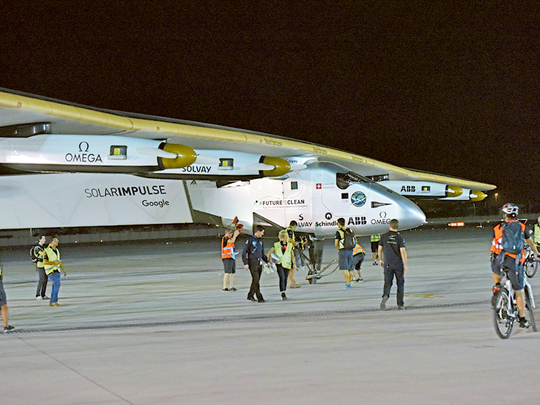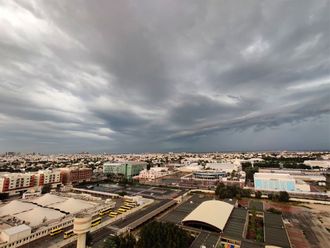
Abu Dhabi: Food and nutrition played an important role in making the Solar Impulse 2 circumnavigation successful, and research findings obtained from the journey will help improve the understanding of nutrition for those working in physically stressful jobs and sports, a top industry expert said.
Ensuring the two pilots’ health was a key goal of the nutrition plan, especially as many legs of the round-the-world trip were particularly long and lasted many days, Stefan Catsicas, executive vice-president, chief technology officer and head of innovation, technology research and development at Swiss food and drink company Nestle, told Gulf News.
“There were a variety of needs that we had to cater to. For example, the pilots wanted to stay healthy throughout their journey, and wanted natural foods without the use of too many preservatives. They also have different tastes, and wanted personalisation in the foods on board,” he said.
“In addition, the different altitudes that the plane flew at created their own nutritional demands. For example, because the plane was not pressurised, temperatures dropped as the plane rose to altitudes of 8,500 metres during the day. In this cold, the meals we provided were carbohydrate-rich, like cereals, or fat-rich,” Catsicas said.
Later at night, as the solar-powered plane lost height, meals tended to be protein-rich.
Another constraint was the limited energy use on board Solar Impulse 2, which meant that there were no additional devices to warm or refrigerate food.
“We therefore developed a new cooking and sterilisation method that would keep the meals, for example, a mushroom risotto, fresh for up to three months. It was then packaged in self-warming pouches that can reach 60 degrees Celsius, so that the pilots could consume fresh, warm food,” Catsicas explained.
Nestle has now applied for a patent for this cooking and sterilisation method, which could eventually be put to industrial use.
Each pilot consumed about 1.8 kilograms of food, 2.5 litres of water and 1.5 litres of energy drinks per day during the journey, which amounted to a daily total of 3,500 calories. Both Solar Impulse 2 pilots were also able to maintain their weight throughout the 16-month circumnavigation, indicating that they ate a balanced diet and enough nutrient-rich food.
“Part of the challenge was also to know that pilots lose their appetite at higher altitudes. So, the food had to be tasty in order to ensure that the pilots would eat it to maintain their energy levels and muscle mass,” Catsicas said.
Elderly people experience a similar loss in appetite but continue to need energy, and Nestle hopes to use the research to develop nutrient-dense foods for them, the executive said.
In addition, none of the food on board was wasted.
“Forty per cent of food is wasted around the world today, and the way in which the pilots’ nutritional needs were exactly met also provides take-home messages in reducing food wastage,” Catsicas said.
The research, which started six years ago at Nestle, is expected to help “push the boundaries of nutrition towards making food tasty and healthy, as well as a means to ward off disease and illness”, he added.
The pilots will continue to collaborate with Nestle over the next two years to provide data and understanding of their nutritional needs during the circumnavigation, which will help further the research.
What each pilot consumed per day
An average of 3,500 calories from:
2.5 litres of water
1 litre of sports drinks
1 portion of yoghurt
1 portion of breakfast cereal
1 decaffeinated coffee
1 protein drink
Wholegrain bread
Parfait spread
1 soup (either carrot, or potato and leek, or chicken and curry)
Tabbouleh
1 hot meal (chicken with summer vegetables, or mushroom risotto, or potato gratin)
1 bar of Swiss chocolate
Some fruits and nuts
1 225-gram flavoured pudding
Source: Nestle












